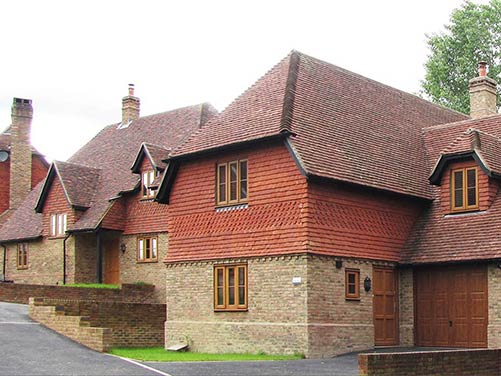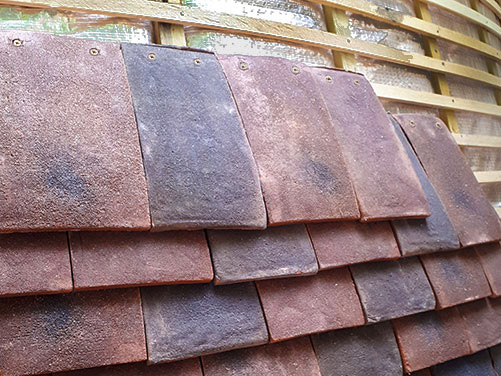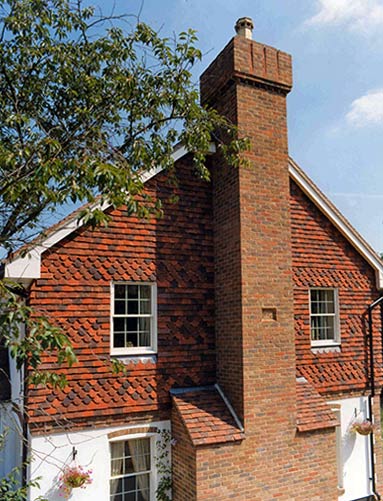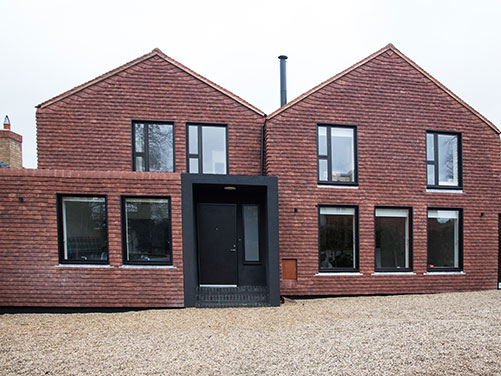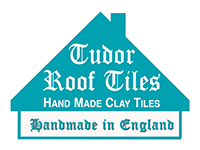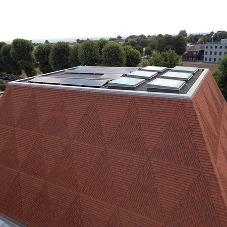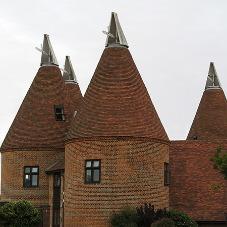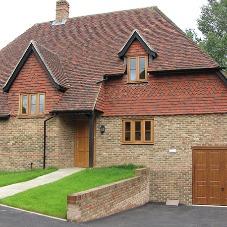Roof tiling installed on walls is known as ‘tile hanging’, ‘tile cladding’ or ‘vertical tiling’ and is generally incorporated to add interest to a building, particularly where the roof is a prominent aspect of a building. The tiles in effect, extend the aesthetics or create complimentary aesthetics of the roof, ultimately all the way to the ground if desired.
Early forms of tile hanging appeared in the southeast of England towards the end of the 17th century as a way of improving the weather protection of wattle and daub on first floor walls. Bricks would have been too heavy for the timber framed buildings of the time, so tiling offered a lightweight and cheaper solution.
The standard construction for this type of tiling is to install underlay against the wall, with vertical battens (counter battens) set at up to 600mm centres secured into the wall, then horizontal tile battens fixed to the counter battens. All double lapped plain tiles laid vertically must be twice nailed.
Tudor Roof Tiles are the perfect choice for both roof and vertical tiling. A comprehensive range of colours is produced at its modern manufacturing plant in Lydd on the Romney Marsh which can transform a building's facade, adding character and depth. The natural, earthy tones of Tudor clay tiles harmonize with various materials and colours, allowing for endless design possibilities. A full range of fittings, including internal and external angles, and a variety of ornamental tiles, means that Tudor clay plain tiles are an excellent choice for all traditional and modern architectural applications. Clay tiles when used vertically offer additional values further than the aesthetics. These include low maintenance, resistance to wear and tear, and a beautiful appearance for decades. They can withstand rain, snow, and extreme temperatures, without deteriorating or fading of the clay.
Used vertically, Tudor clay tiles act as a barrier against heat transfer, keeping interiors cooler in hot weather and warmer in the cold. This natural insulation can lead to energy savings and a more comfortable living or working environment. Vertical tiling also offers sound insulation benefits. The tiling can help reduce external noise, creating a quieter and more comfortable interior environment. This is particularly valuable in urban settings or near busy roadways.
Rated A+ for low environmental impact, old roof tiles at the end of their life can be crushed and used as aggregate or living roof substrate. Tudor not only examine the entire lifecycle of its tiles from the clay quarry to the roof, but they use a proven energy efficient kiln which also minimises emissions. 97% of all manufacturing waste produced is recycled, and manufacturing in Kent helps to ensure a much lower carbon footprint than imported roof tiles.
Taken from original written for Tudor by John Mercer - john.mercerconsultant@gmail.com
Using Tudor Clay Tiles for Vertical Tiling
| T | (01797) 320202 |
|---|---|
| F | (01797) 320700 |
| E | info@tudorrooftiles.co.uk |
| W | Visit Tudor Roof Tile's website |
| Dengemarsh Rd, Lydd, Kent, TN29 9JH |

